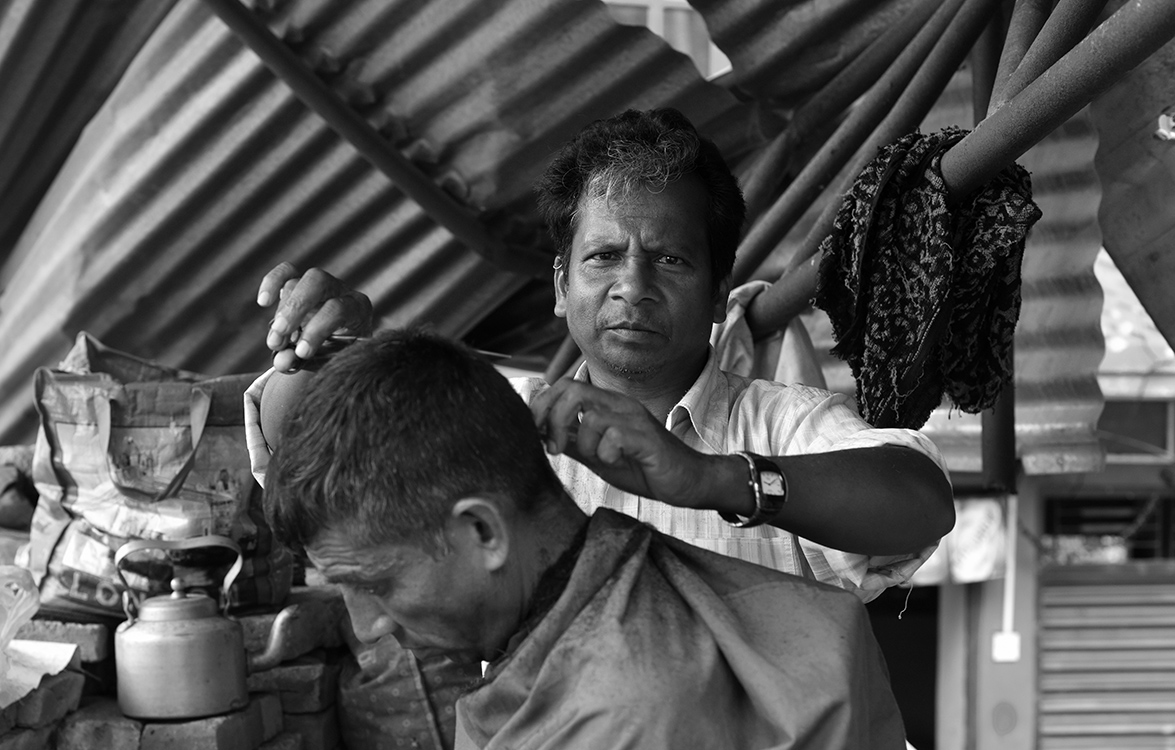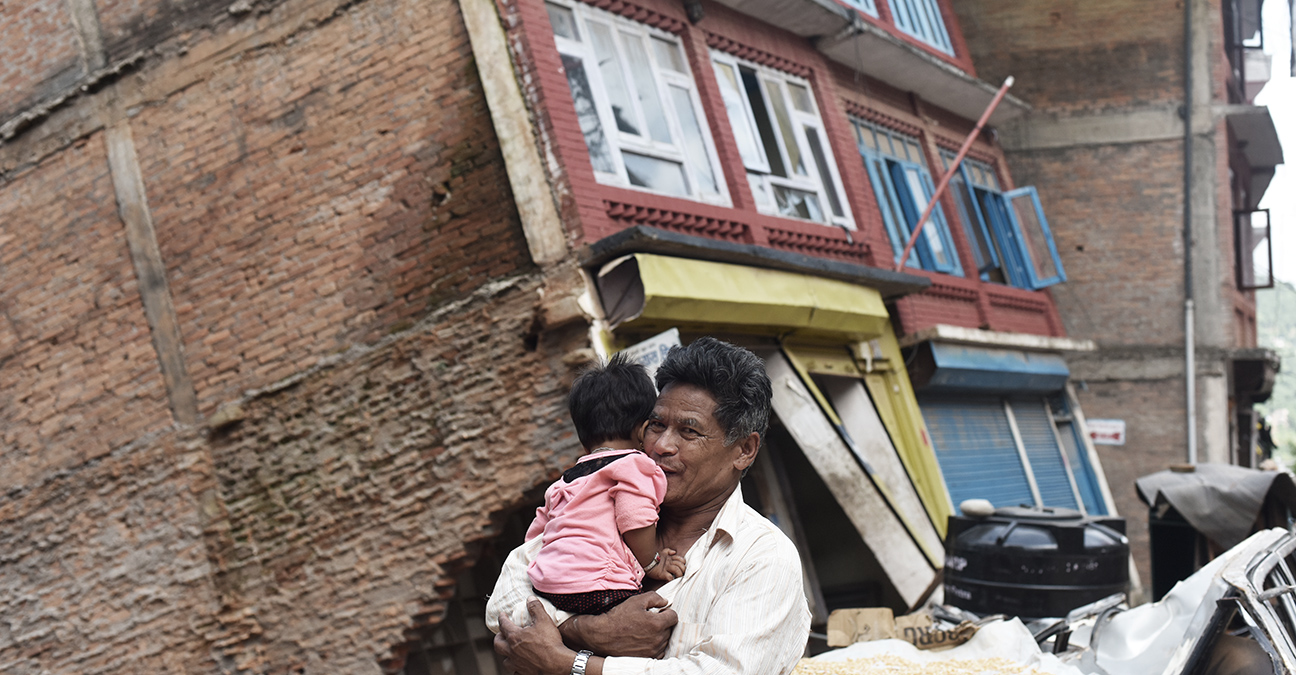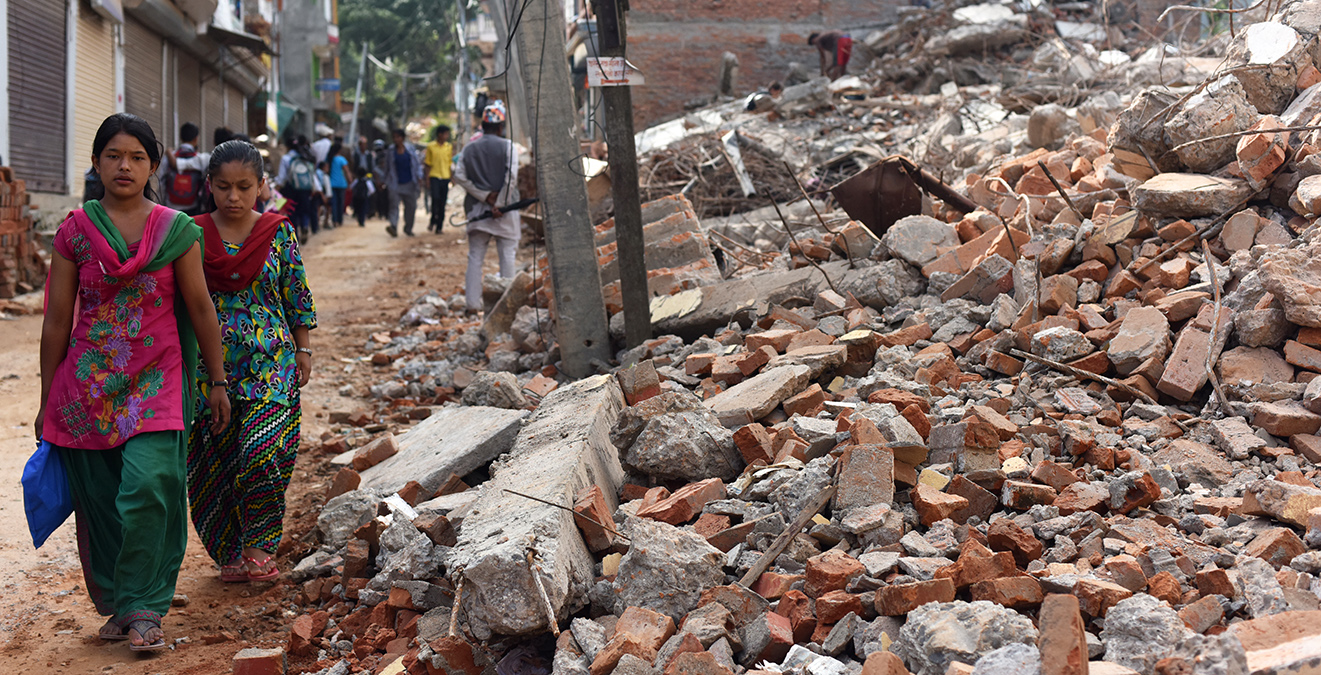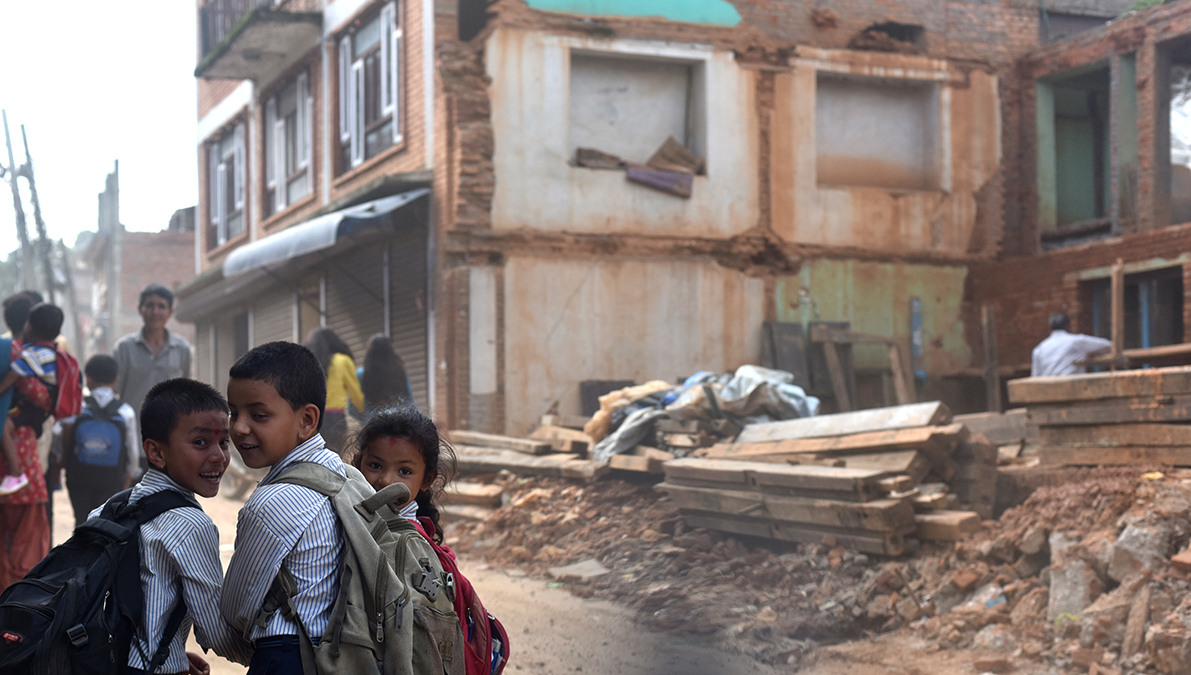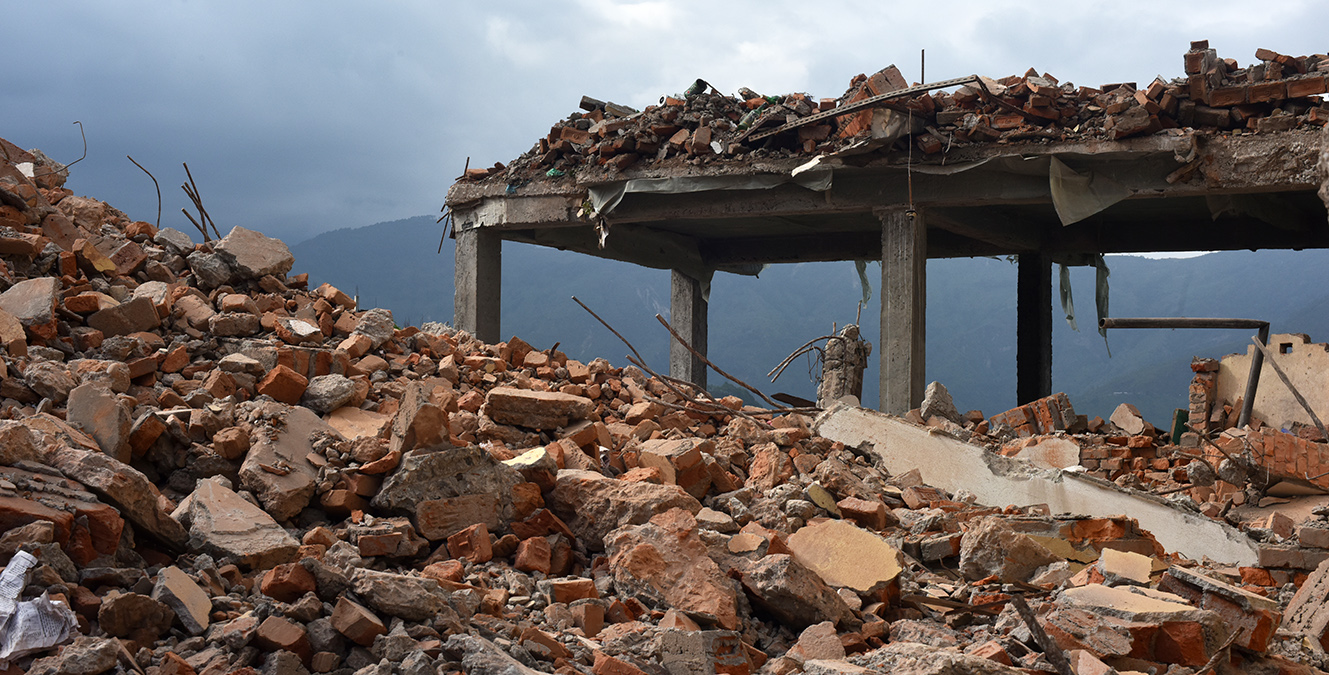Chautara, once familiar
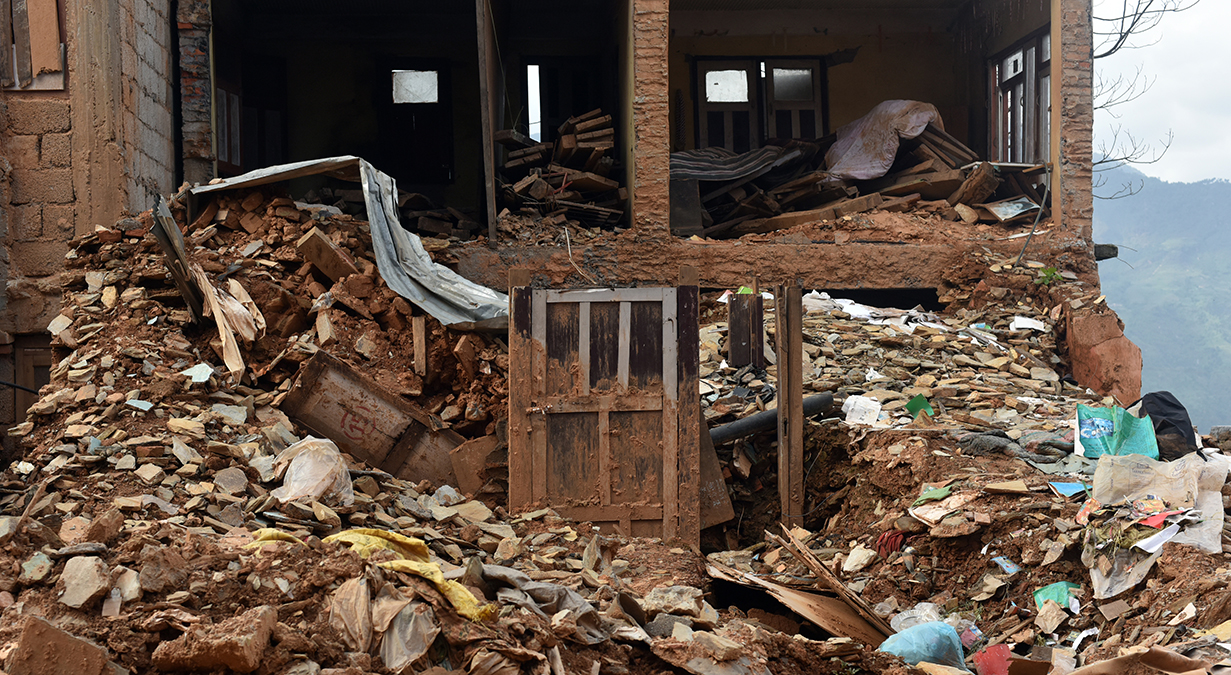
Chautara Bazaar is the first place I lived in Nepal along side my fellow batch of Peace Corps Trainees in the fall of 2012. It is a small bazaar, with approximately 10,000 residents, that serves as the headquarters town for Sindhupalchok district and – is fatefully sited atop a ridge. It may be more accurate to describe it as straddling a ridge really, as if someone had come to a steep hilltop and sliced off just enough flat space for a road, and then built 2-4 story buildings on stilts along either side.
The first big earthquake hit just before noon on a Saturday. The timing left much to fortune – many villagers were in the field or outside rather than indoors sleeping and children were not in school. My brother Sujendra sat inside his friends house, on the forth floor of a building in middle of the bazaar. They were just about to head out and play on a cycle when the earthquake hit, throwing them around the room for nearly a full minute (which may not seem like a lot until you count out 60 seconds to yourself and imagine being violently thrown around for that long). When the shaking stopped, they looked out the window to a plume of dust. About a third of the buildings had gone down partially or fully. They were among the lucky ones, inside a building that cracked but remained standing.

(He was in the building circled in red; Also note: the tin structure in the foreground has been built after the quake to serve as temporary housing)
My first return to Chautara happened about 2 months post-earthquake. By that time, the government engineer team had gone around and marked buildings with their red-yellow-green system (assessing the level of damage to each building: green indicating “safe for use”, yellow indicating “enter with caution” and red indicating “dangerous – do not enter”). For this town, they didn’t bother printing fancy signs on tarp as I’d seen elsewhere; they’d simply spray-painted a colored dot by the stoop or doorway of each structure. Curious to quantify the level of damage, I decided to tally the totals for each. The results:
Out of 200 buildings,
40% had partially collapsed, fully collapsed or were torn down;
24% were red;
29% were yellow; and
a mere 7% were green.
Considering both how many buildings were gone and how many left standing are unsafe, Chautara was effectively destroyed.
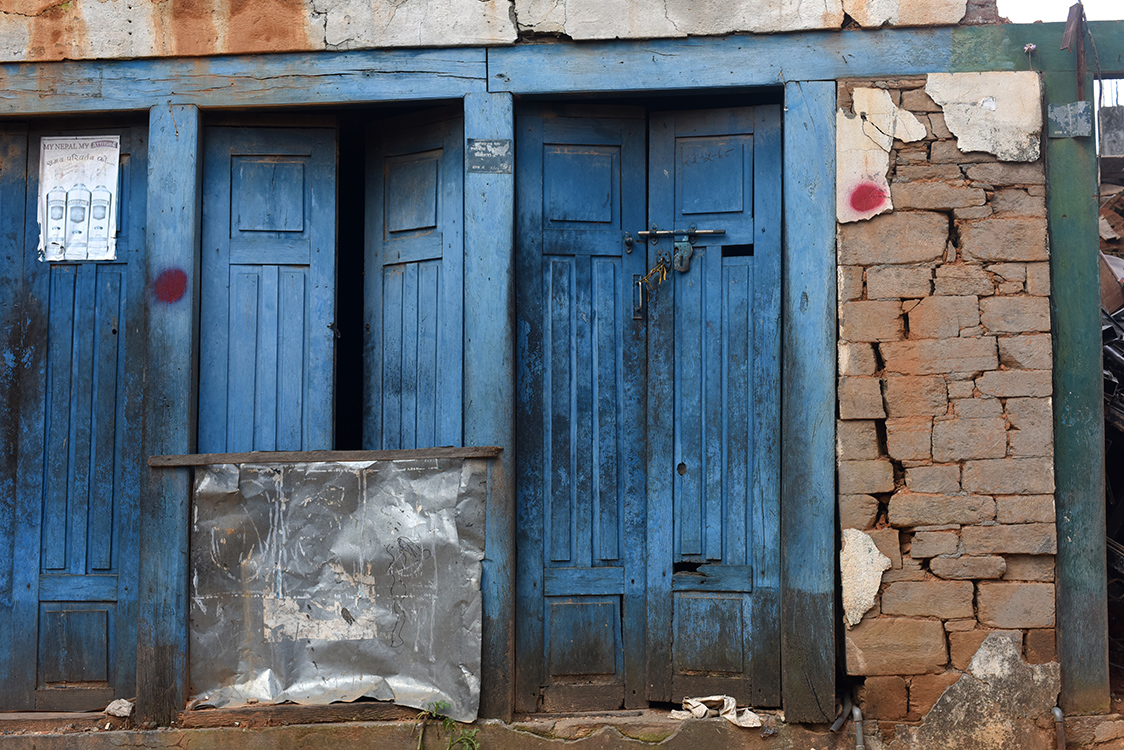

One building literally slide down the side of a hill, probably 100 yards, the floors spread out like a stack of dishes. I asked my brother whether it fell of it’s own accord or had been pushed over by a demolition crew. He told me the third earthquake did that. Third? Officially there were only two earthquakes, but one of the biggest aftershocks the day after the first major quake was epicentered in Sindhupalchok – so around here, they count three.
– – –
Chautara is tiny, but it is the headquarters town for the Sindhupalchok district, and thereby has been the natural headquarters for much of the relief efforts in the area. The central tulikhet (big field), once filled with soccer players of all ages now housed a modest tent city. The Norwegian Red-Cross filled half of the space with a tent hospital; other INGO tent-offices occupied a quarter, and the last quarter had tents for displaced residents. As with Kathmandu, I was surprised to mostly see tents spattered about residential areas here or there instead of as large swaths. It seemed most displaced residents preferred to stay near their home and their fields if they could, and set up either make shift tarp-tents or small tin shacks on their own accord. Otherwise, the small tent camps I saw were mostly for INGOs – for UNICEF, Medicines Du Mundo, the UN, and Acted. Each had a few things in common: central larger tents for meetings and dining, spaciousness, neatly graveled walkways, pit latrines, vehicles, guards by the driveway and – fencing, sometimes with barbed wire. On the one hand I could see the logic to this; on the other, something about it felt ugly, as if they’d set up mini military compounds…
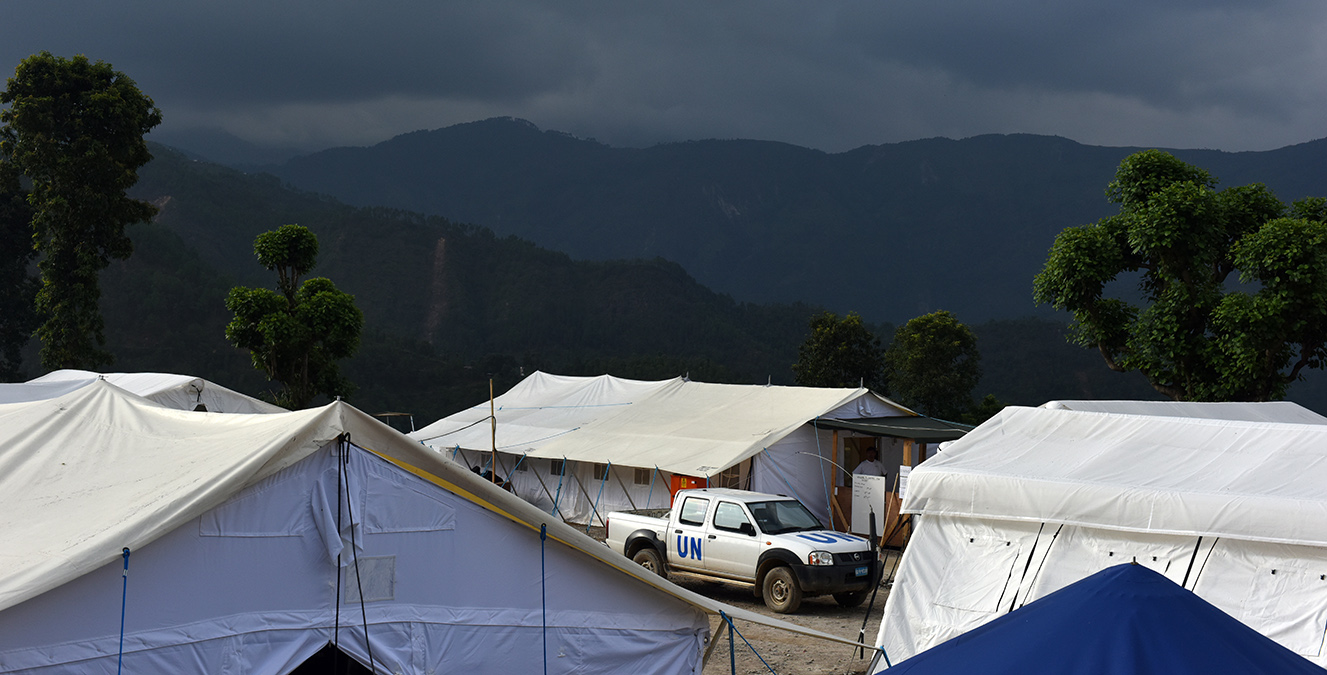
– – –
It was strange and hard to visit someplace that I had known so well but now could hardly navigate. The familiar landmarks had literally disappeared, piles of rubble in their place. With both older brick buildings AND a lot of newer concrete buildings collapsed or destroyed, the destruction here demonstrates that proper construction consists of many things beyond material: proper reinforcement systems, proper siting, proper foundations. Any one piece missing and the whole thing goes down – such as the brand new four story concrete hotel in middle of town.
But like the other places I’ve seen, there are signs of hope, and signs of a people attempting to return to a life as usual. Those buildings that remain standing have re-opened shops for business, despite their red-yellow-green status. Where upper floors have collapsed, tin roofs now shelter the ground floor. Crews of men sort through the rubble, separating neat stacks of bricks and twisted rebar for recycling. Beneath a half-crushed bus stand a barber has set up shop. And – I saw a lot of familiar faces who, per usual, invited me to sit down and laugh over a cup of tea with them.
What happens next – if and how and where they rebuild – is anyone’s guess.
